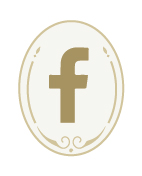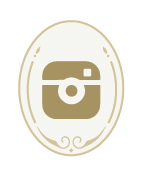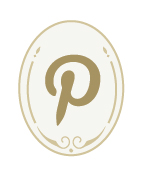Mr. Collins and Mary Bennet seem to be a match made in...heaven? Tinder? Some realm. They have similar interests (sermons) and social tendencies (awkward). I know I am not alone in wondering why they did not end up together.
Why did Mr. Collins not marry Mary Bennet? The main reason Mr. Collins did not marry Mary Bennet was based on his conceit. Mary Bennet would not be an impressive wife to others, whereas a sweet, beautiful Jane or lively, handsome Lizzy would.
Why Mr. Collins Did Not Marry Mary Bennet
Mr. Collins, one of Jane Austen’s most classic side characters, is introduced to us as
... not a sensible man, and the deficiency of nature had been but little assisted by education or society…[he was a] mixture of pride and obsequiousness, self-importance and humility. (Ch 15)
This insensible and pompous man enters the stage of Pride and Prejudice with the intent of finding a wife. We learn from his proposal to Miss Elizabeth Bennet that he wants to marry because it is his duty to set an example of it in his parish, it will add to his happiness, and that his patron wishes it for him (ch 19). I think we should give him credit for wishing to marry a Bennet, knowing that he will inherit their home. That is a gentlemanly gesture, for sure, but did not work out. Why? He could have matched with Mary, right?
Though Mr. Collins is quite a fool in social situations, he can identify the people who can lift him up in the eyes of others merely by association. For example, he never stops name dropping Lady Catherine de Bourgh and, with great faux-pax, approaches Mr. Darcy to converse. With this tendency it makes sense that he would want an attractive, socially suave wife. Despite his own social awkwardness, he can see that Mary’s plainness, meager talents, and social ineptness will not provide him the type of esteem he longs for.
Mr. Collins is all about appearing moral and right, even if his heart is not there. For the Bennet’s social class during the Regency era it was uncommon for younger sisters to be “out” before the elder sisters were married. This means they could not go to social gatherings including activities which could partner members of opposite genders. Mr. Collins chose Jane as his wife to be with the “strictest notions of what was due to seniority.” He switched to Elizabeth only after he learned that the eldest “was likely to be very soon engaged.” (Ch 15). Because of his priority to always be in the right, it is likely that he did not even think of Mary as a wife since she had two unmarried sisters. What would the story have been if Mary had been the oldest? ...probably less amusing.
Another reason that Mr. Collins did not look to Mary is that he had just been rejected, essentially, by two of the Bennet’s sisters. Going for a third would be hard to muster elegance around. I can hardly blame him for his pride in this sense and sympathize with his choice to seek a wife elsewhere. Even for a ridiculous man, humiliation of that nature is hard to swallow.
Did Mary Want To Marry Mr. Collins?
Jane Austen did not spend much time as a narrator on the Bennet middle-sister and so we do not know if Mary wished Mr. Collins to ask for her hand. The 2005 Pride and Prejudice film indicates that Mary is jealous and saddened of his proposal to Elizabeth. Other adaptations and spin off novels do the same and some even match the oddballs together. Though this decision is logical, it is not canon.
In the novel all we know is Mrs. Bennet thinks that Mary could be “prevailed on to accept him.” Continuing in this thought, the Bennet mother lets us know that Mary did rate “his abilities much higher than any of the others [sisters]; there was a solidity in his reflections which often struck her (Ch 22).” I hardly think this shows us that Mary pined for the man. She might have since she did live in a home that talked non-stop of husband hunting. For one who was largely overlooked, would it not be grand to be the first married among her sisters and finally noticed? Austen did not give us insight into Mary’s thoughts here, though.
Spin off stories in recent decades have been created that focus on Mary and even turn her into the star. We are able to connect more with her and find that she is not at all ridiculous. We find in some of these creations that Mary does not wish to secure Collins’s hand and in others that she does wish for it completely. I can enjoy these interpretations, though, I do remember that these are not the character that Jane put into her world. Mary was among the silly side-characters meant to color the story. All we know of Mary, besides what is in the novel, is that Austen mentioned among her family that Mary grew and married one of her uncle Philips’s clerks in Meryton. This is according to her nephew’s biography on her.
Would Mary and Mr. Collins have made a good match?
Since happiness in marriage is entirely a matter of chance, I suppose one between Mary and Mr. Collins would be a toss of the dice. Okay, not really. One thing is for certain, had they married they would be quite insufferable to spend an evening with. Apparently even Austen could not handle it--or she simply needed to keep Longbourn entailed away to highlight the heroine’s bold refusal of Mr. Darcy.
Most likely a union between Mary and Mr. Collins would end up fine for them and annoying for those in their circle. Both vied for recognition and respect, though how to rightfully gain that type of attention was elusive to them both. Mary wished to gain it through intelligence and wisdom that she did not hold and Mr. Collins wanted it through social sophistication, which he definitely was lacking. They both attempted to acquire favor through showing their superior moral understandings. Self-righteousness is a sure way to NOT win friends and influence people. Yes, this would be rough to handle as a person in their community.
As for their happiness in the match, well, it would probably work fine. They were odd ducks, but had honest characters and held equal respect for matrimony. Though they could see the downfalls in each other --Collins not smart enough, Mary not socially graceful enough-- they could also console themselves that they were better than the other...with a bit of quiet condescension. Their interests of studies on morality could be shared, though Mary seemed more attracted to them than Collins was. She chose to read Fordyce’s sermons for their merit rather than to be seen reading them, as is evident in Mr. Collins (recall he easily put it down and was persuaded to backgammon). Financially they would have little worries with Mr. Collins’s situation in life and Mary’s repulsion to extravagance. Their desire to live a socially correct and upstanding life would likely make the match more equal and pleasing than many of the time.
Why did Mr. Collins Choose Charlotte?
Mr. Collins thinks of himself more than he thinks for himself. As seen from his bouncing from woman to woman, he is not searching for a partner where they “seem to have been designed for each other (ch 38).” No, he’s thinking of appearance and possibly of satisfaction in other realms (yes, sexually--he’s human).
Lady Catherine tells him to get married and asks for a gentlewoman for herself and an active, useful woman for him. He came to Longbourn to fulfill that command in order to remain esteemed by this “noble” patroness. The wily abilities of Charlotte brought the connection about much more than any thought spurred from his own reflections did.
Charlotte’s timing was perfect. She came in right when he was most humiliated and resentful of the Bennet household. Charlotte knew how to speak to his ego and work on his weak mind. She schemed to turn his attention to her, and succeeded faster than she anticipated. No doubt Mr. Collins was swayed by the fact that her father was a knight. Sir William Lucas’s knighthood was not inherited and Austen paints it as a silly rank, but for Collins any rank puts a little more air into his puffed ego.
Without his realization, Charlotte positioned him much better than he would have from his own devices. Jane and Elizabeth were his first choices, but hardly “useful” as Lady Catherine recommended. Charlotte had spent time in the kitchen, unlike any of the Bennet daughters, had a small fortune, a more respectable and common education, a knighted father, and knew how to work with (sometimes even manipulate) people to keep peace and balance. All of these attributes are a much better match in practicality and happiness for Mr. Collins than Lizzy or Jane would have given...Or Mary, for that matter. Lucky Mr. Collins.
Resources:
https://www.theatlantic.com/entertainment/archive/2016/08/theres-something-about-mary-bennet/496322/
https://pemberley.com/etext/PandP/index.html







